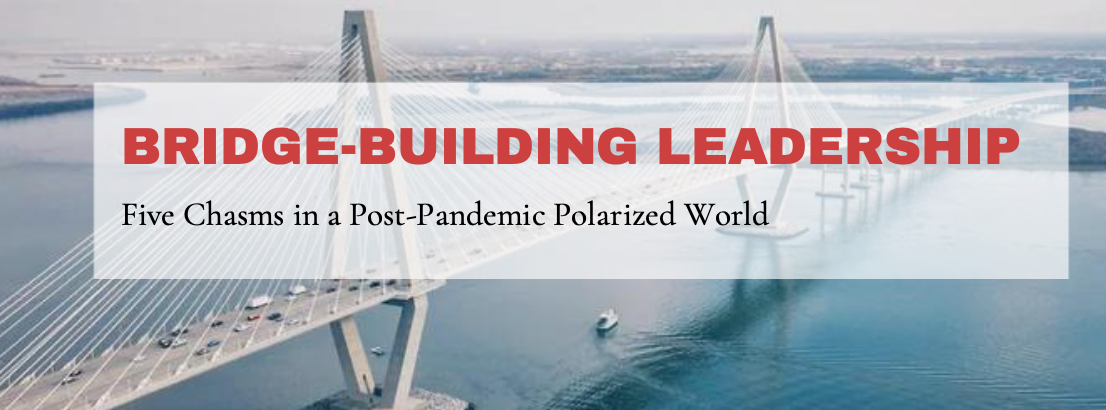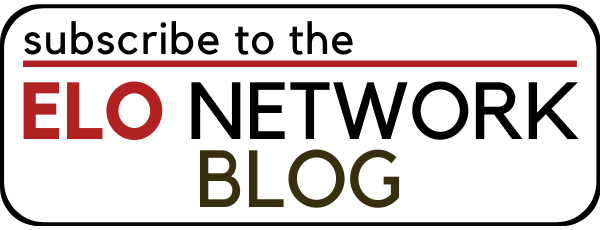After two years of Covid, people have rarely been more polarized. As a result, there has hardly been a time with a greater need for bridge-building leadership. What are the key chasms in our post-pandemic polarized world and how can they be addressed by leaders?
The sources of dispute are legion: vaccine policies, government health guidelines, travel restrictions, mask-wearing requirements, balancing individual and community rights, and managing economic impacts on businesses. Our society seems to be increasingly polarized.
People don’t have dialogues—they exchange opinions. The anonymity of online forums fuels extremes. Vitriol is a common currency. Conflict, contrived or real, satisfies the goal of getting noticed. They would rather get attention through histrionics than convince people via logic. They express views, deepened in echo chambers, rather than listen to different opinions.
People, imbued in these dynamics, then come to work. In recent discussions with ELO Peer Advisory Group Network leaders, one common perception is that the workplace is the scene of more conflict and that people are “increasingly comfortable getting mad at one another.” This is a challenge for leaders. Here are five sources of polarization which create chasms in our society and workplaces.
1 – Government Reach
First, and most obviously, is the divide over the reach of government and the balance of citizens’ individual rights and the common good. The government, at the direction of its public health officials, tries to implement policies to safeguard people and manage the health care system. Hence, mask mandates and restrictions on businesses and churches. At the same time, people have their own rights and may not want to be vaccinated and wear masks, etc. The differing views over this approach have reared their ugly head in many venues.
2 – Concepts of Work
Second, there is a divide over very different concepts of work. Today Canada has the lowest unemployment (around 5.3%) since statistics started being kept in 1976—so employees have leverage. They don’t like it, they leave. More remote work, enabled by technology, is here to stay—whether or not employers want it. Boomers, who are often the bosses, are more inclined to think that real work happens at the office. There is a great chasm—and the consequences are significant.
3 - Generations
Third, there are divides across generations: Gen Z (b. 1997-2012), Millennials (b. 1981-1996), Gen X (b. 1965-1980), and Boomers (b. 1955-1964). The issues range from homeownership to the environment. With respect to homeownership, younger generations face the prospect of being life-long renters, whereas Boomers have built up equity in increasing markets over time. Regarding the environment, views vary on the scale of importance and urgency. Will Boomers invest in initiatives that do not benefit them, but benefit the future generations?
4 - Inclusivity & Diversity
Fourth, there are divides across the nature of inclusivity of varied cultures, ethnicities, genders, and sexual orientations throughout organizations. At the extreme, this perspective has become politicized and associated with certain movements. Employers, however, need to address this issue head-on, and this takes deliberate action. Companies that once reflected predominantly their own slice of the population, now need to include a diversity of backgrounds.
5 – Religions & Their Institutions
Lastly, there are increasingly differing views as to the value of religions and their institutions in society. Most churches were good corporate citizens regarding Covid compliance, but a few high-profile aberrations defied health orders. They sullied the church brand. In another blow, the Residential School System issue, and the discovery of mass unmarked graves, highlighted the systemic abuse of specific denominations but tarnished the broader church's reputation. As a result, despite many adherents, organized religions were increasingly discredited by mainstream society.
How do we build bridges across these five chasms? A starting point is to actively listen to different views. We should become accustomed to others who don’t think like us. This now seems to be a counter-cultural approach. However, in a fractured society, this type of leadership focused on bridge-building is direly needed.
This approach is fostered by providing a safe and positive environment for employees to collaborate productively. This environment is facilitated via a shared corporate vision, mission, and values. Without a compelling and clearly communicated common vision, the default approach is to focus on one’s own situation and perspective.
Polarization threatens what previously was referred to as civil society that sustains the interaction of citizens. On the one hand, people have a vital need to belong to specific communities, networks, and organizations, since human beings are relational. On the other hand, leaders need to build bridges to other communities in a way that genuinely honours and respects various identities with their distinct boundaries and values.
There is an important role for bridge-building leadership which can inspire people with a vision of the common good. This will be the start of bridging the five chasms in a post-pandemic polarized world. The more successful companies will reflect an ability to do so.

